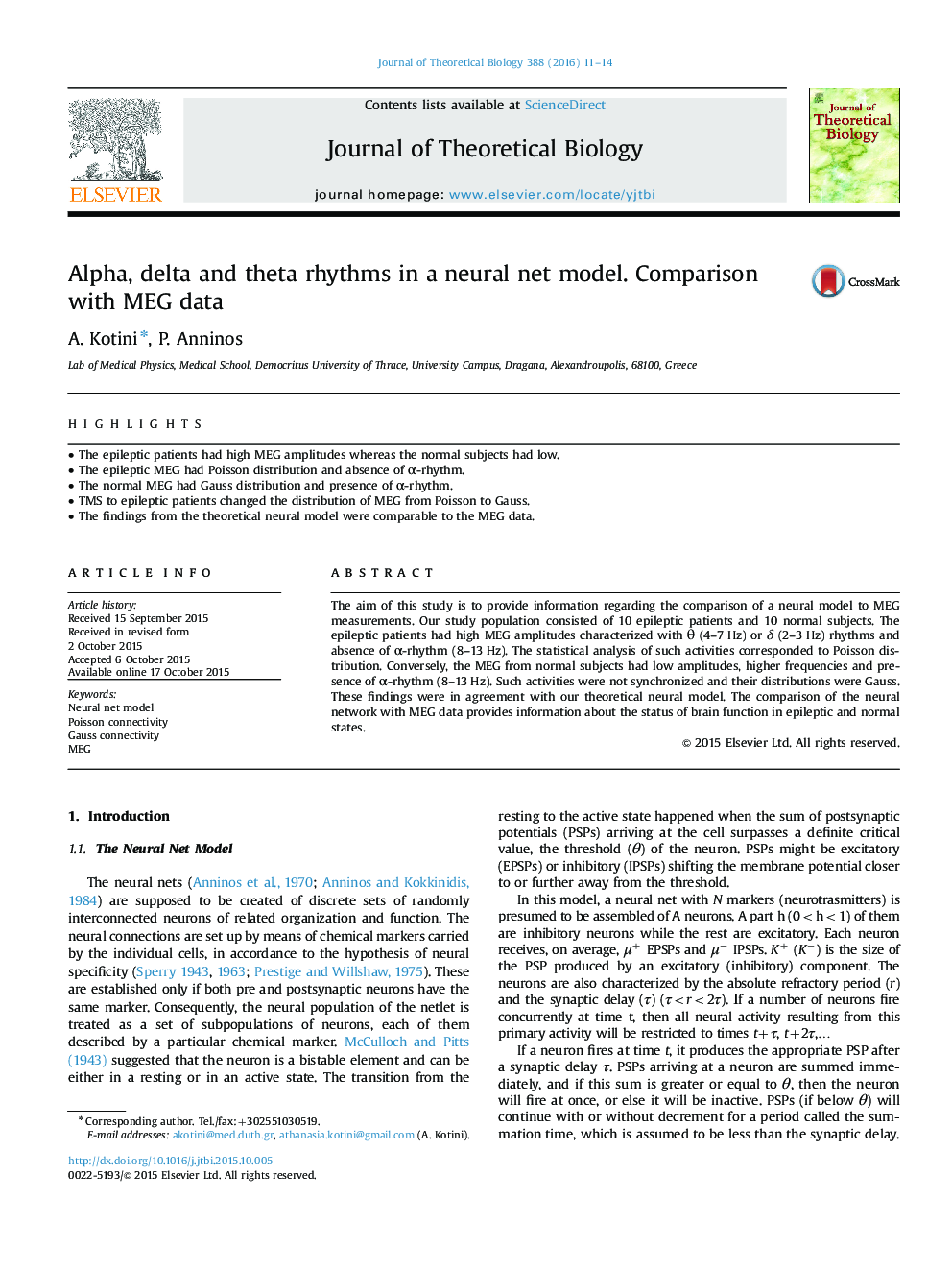| Article ID | Journal | Published Year | Pages | File Type |
|---|---|---|---|---|
| 4495991 | Journal of Theoretical Biology | 2016 | 4 Pages |
•The epileptic patients had high MEG amplitudes whereas the normal subjects had low.•The epileptic MEG had Poisson distribution and absence of α-rhythm.•The normal MEG had Gauss distribution and presence of α-rhythm.•TMS to epileptic patients changed the distribution of MEG from Poisson to Gauss.•The findings from the theoretical neural model were comparable to the MEG data.
The aim of this study is to provide information regarding the comparison of a neural model to MEG measurements. Our study population consisted of 10 epileptic patients and 10 normal subjects. The epileptic patients had high MEG amplitudes characterized with θ (4–7 Hz) or δ (2–3 Hz) rhythms and absence of α-rhythm (8–13 Hz). The statistical analysis of such activities corresponded to Poisson distribution. Conversely, the MEG from normal subjects had low amplitudes, higher frequencies and presence of α-rhythm (8–13 Hz). Such activities were not synchronized and their distributions were Gauss. These findings were in agreement with our theoretical neural model. The comparison of the neural network with MEG data provides information about the status of brain function in epileptic and normal states.
